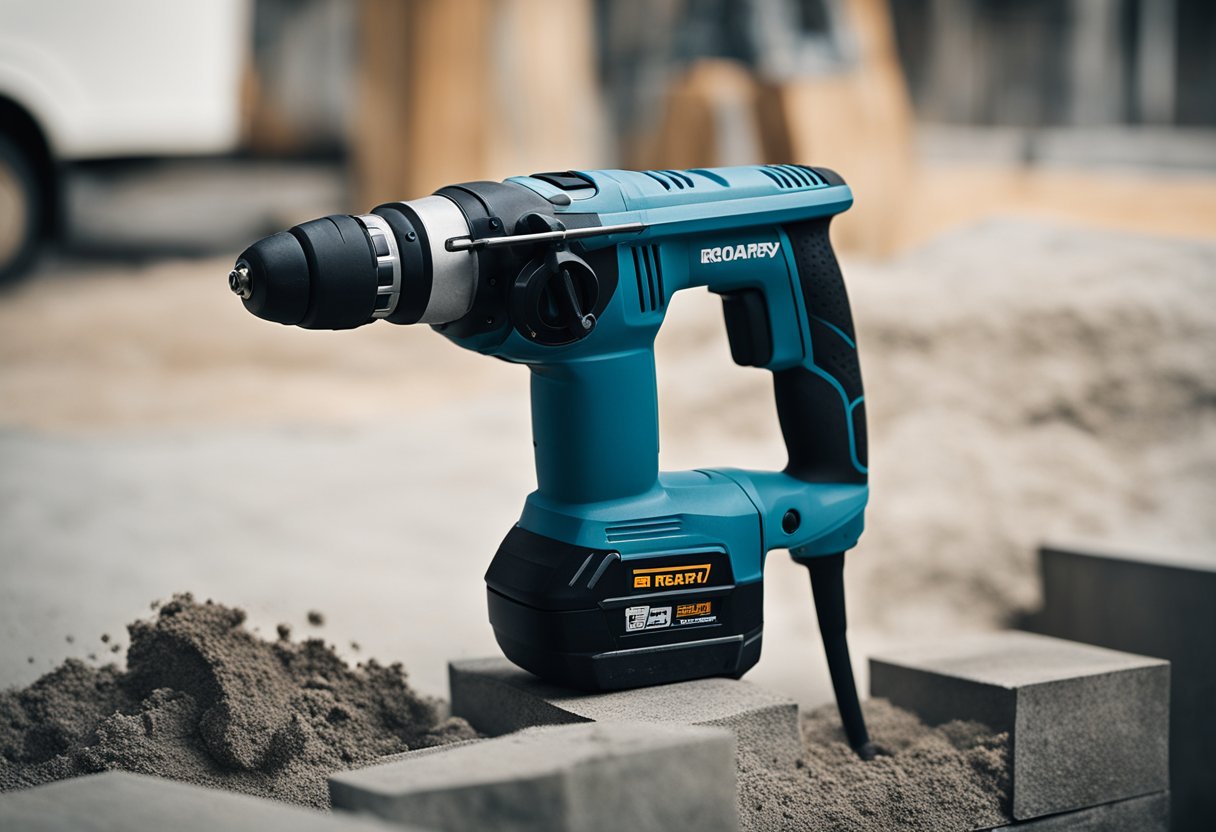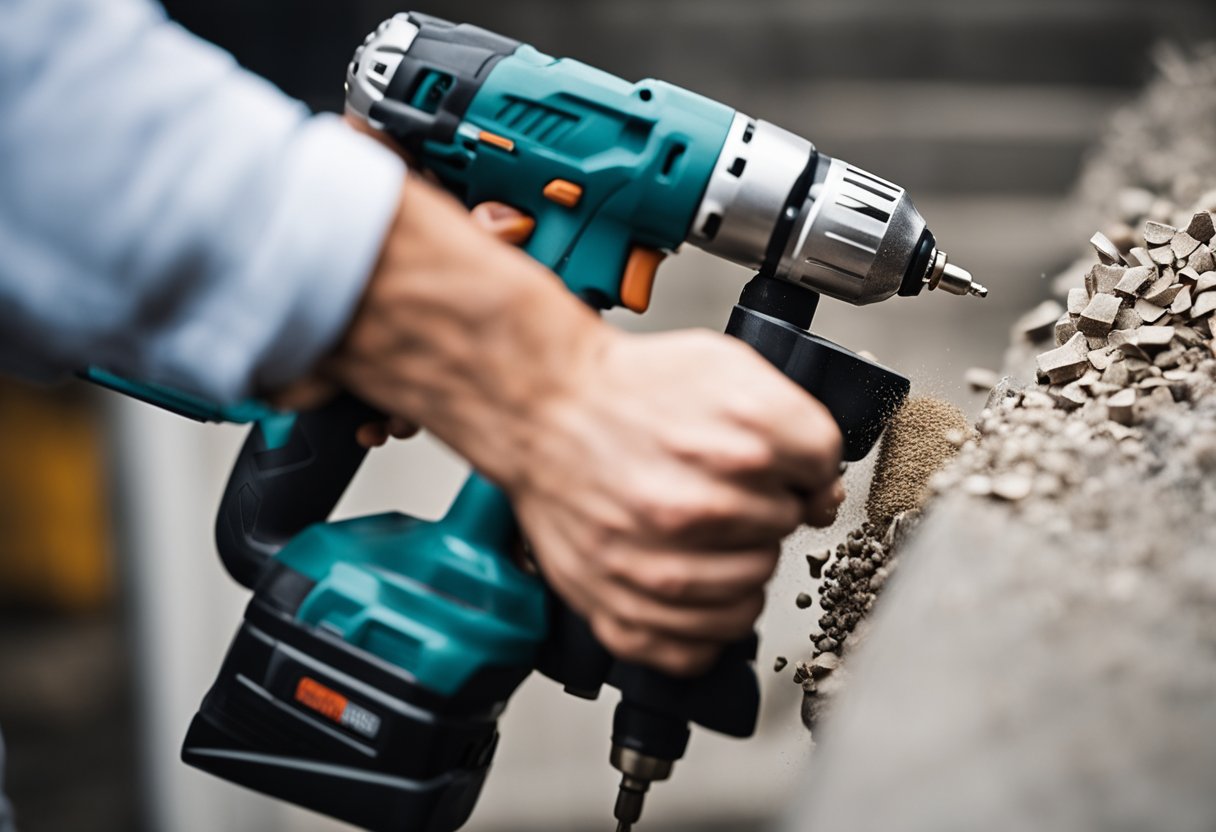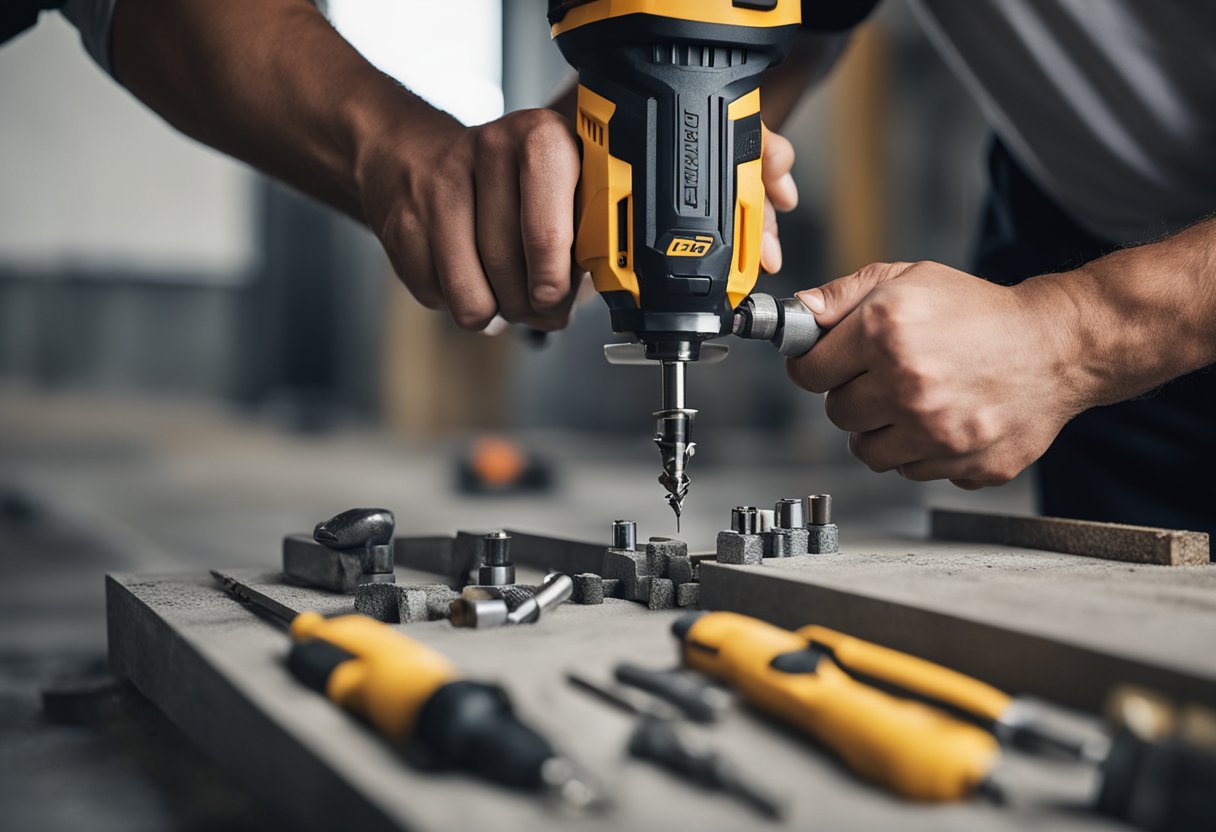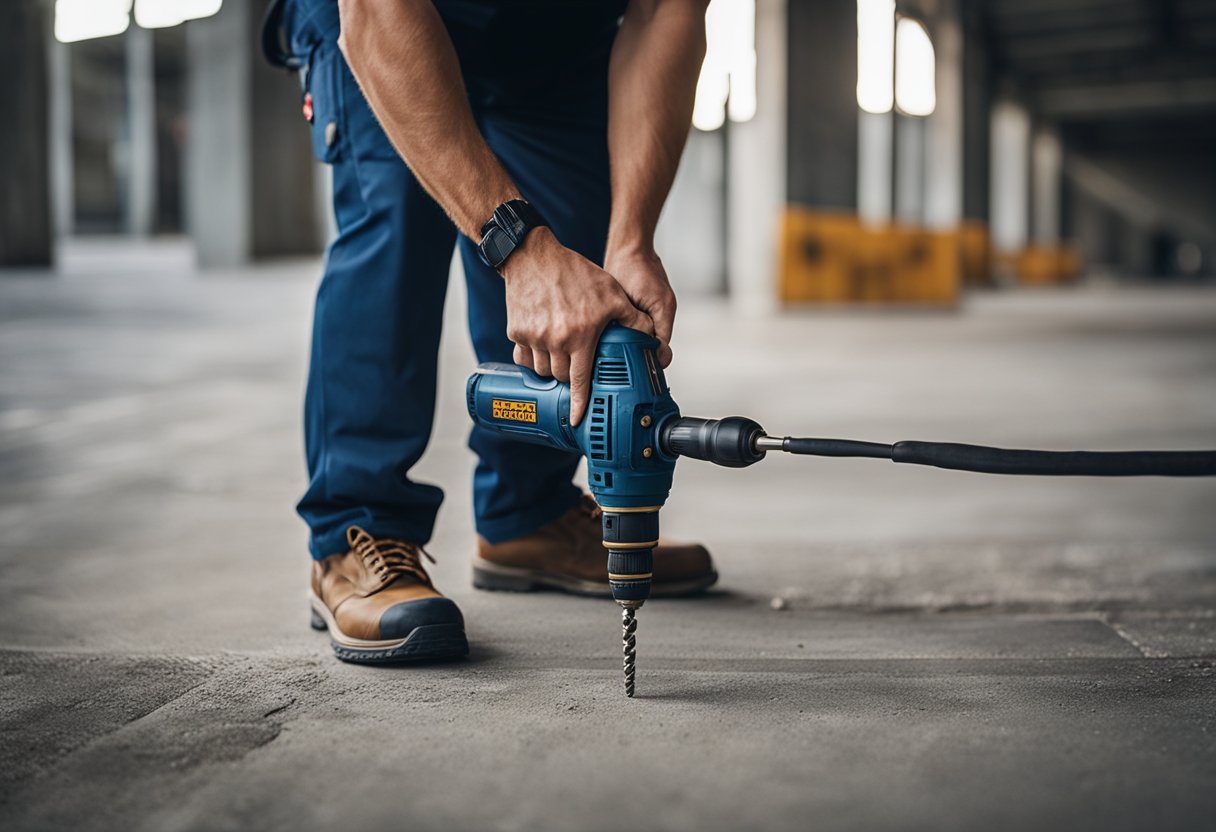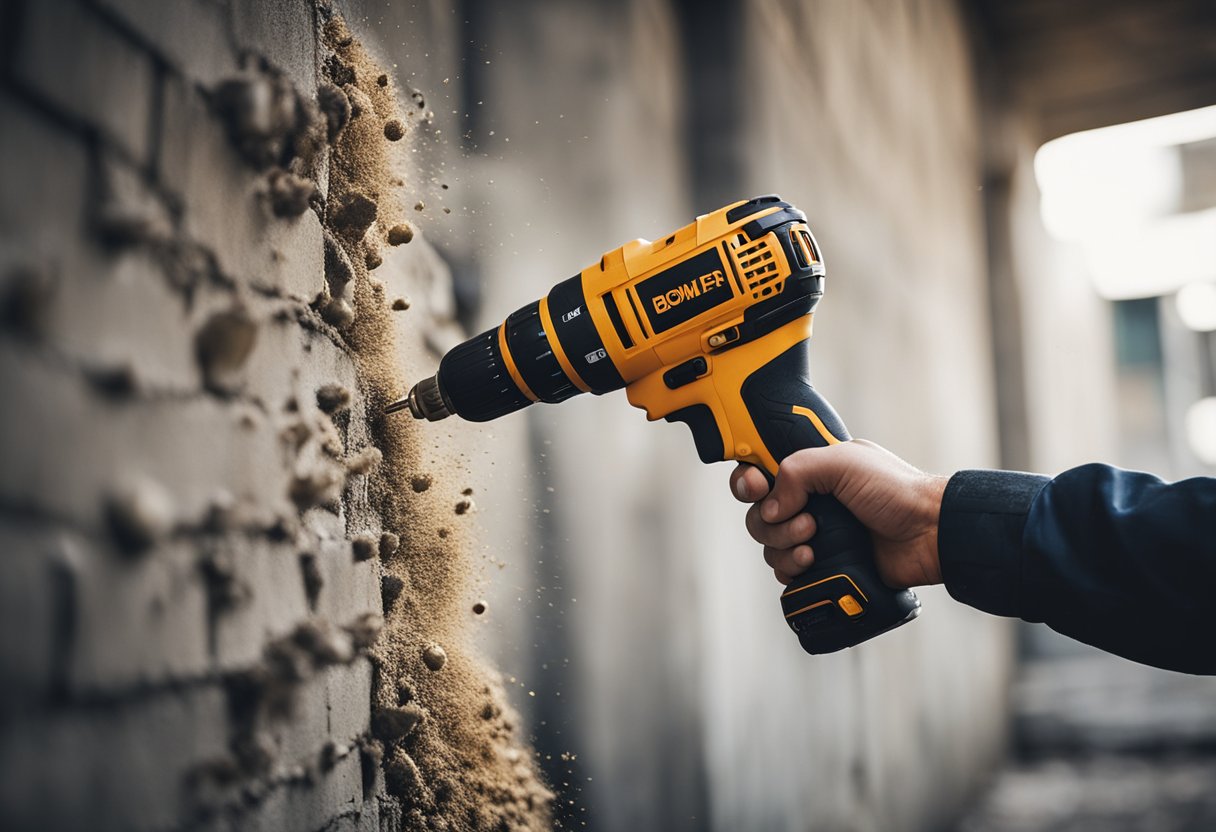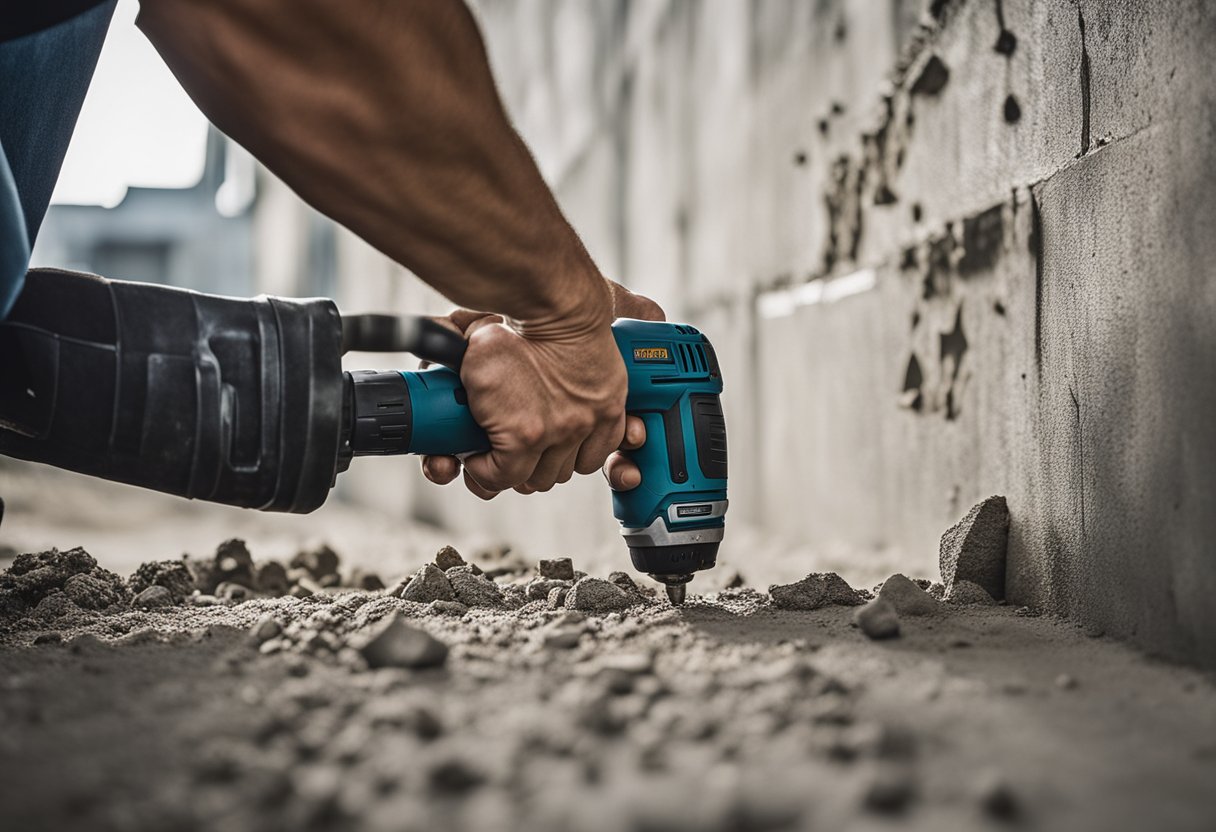Introduction:
As a DIY enthusiast or a professional contractor, you may have encountered situations where you need to drill into concrete surfaces. While a hammer drill is the most common tool used for this purpose, not everyone has access to one. Fortunately, there are ways to drill into concrete without a hammer drill. In this article, I will explain how to drill into concrete without a hammer drill, step-by-step.
Understanding the Basics:
Before we get into the details, it’s important to understand the basics of drilling into concrete. Concrete is a hard and brittle material that requires a lot of force to penetrate. The key to drilling into concrete is to use the right tools and techniques. While a hammer drill is the most efficient tool for the job, you can also use a regular drill with masonry bits or diamond core bits to get the job done.
Key Takeaways:
- Drilling into concrete without a hammer drill is possible with the right tools and techniques.
- Masonry bits or diamond core bits can be used with a regular drill to drill into concrete surfaces.
- Proper preparation and drilling technique are essential for successful drilling into concrete.
Understanding the Basics
When it comes to drilling into concrete, having the right tools is essential. While a hammer drill is the go-to option for many, not everyone has access to one. Fortunately, it is possible to drill into concrete without a hammer drill.
To start, it’s important to understand the difference between a hammer drill and a regular drill. A hammer drill uses a forward and backward motion to create a hammering effect, which helps to break up the concrete and make drilling easier. A regular drill, on the other hand, simply rotates the bit without the hammering effect.
When drilling into concrete without a hammer drill, it’s important to use the right type of drill bit. A masonry bit is designed specifically for drilling into concrete and other hard materials. These bits have a carbide tip that helps to cut through the concrete, making the drilling process easier and more efficient.
It’s also important to choose the right size drill bit for the job. For smaller holes, a regular drill with a masonry bit will suffice. However, for larger diameter holes, it’s best to use diamond or carbide core bits. These bits are designed to cut through concrete quickly and efficiently, making the drilling process faster and easier.
Overall, drilling into concrete without a hammer drill is possible with the right tools and techniques. By using a regular drill with a masonry bit and choosing the right size drill bit for the job, you can successfully drill into concrete and complete your DIY projects with ease.
Choosing the Right Tools
https://www.youtube.com/watch?v=Xq1tSFduzVo&embed=true
When it comes to drilling into concrete without a hammer drill, choosing the right tools is crucial. The right tools can make the job easier, faster, and more efficient. Here are some tools you will need:
1. Regular Cordless Drill
The first tool you will need is a regular cordless drill. While a hammer drill is ideal for drilling into concrete, a regular cordless drill can get the job done if you have the right bit. Make sure your drill has enough power to handle the job.
2. Proper Bit
The second tool you will need is the proper bit. Masonry drill bits are the best choice for drilling into concrete. They are made of heavy-duty tungsten carbide and come in a much thicker diameter at the tip for a lower risk of breakage and damage. Make sure to choose the right size of drill bit for the job.
3. Rotary Tool
A rotary tool can also be useful when drilling into concrete. It can be used to grind away at the concrete, making it easier to drill through. A rotary tool can also be used to smooth out rough edges after drilling.
4. Hardware Store
Finally, you will need to visit a hardware store to purchase the necessary tools. Make sure to consult with a professional to ensure you are purchasing the right tools for the job.
By choosing the right tools, you can successfully drill into concrete without a hammer drill. Remember to take your time, use proper safety equipment, and follow the instructions carefully.
Preparation Before Drilling
Before drilling into a concrete surface, it is essential to prepare adequately. Here are some steps to follow:
Step 1: Choose the Right Drill Bit
The first step is to choose the right drill bit. A masonry drill bit is the best choice for drilling into concrete. These bits are specially designed to handle the hardness of concrete. Ensure that the drill bit is the right size for the hole you want to drill.
Step 2: Mark the Spot
Once you have the right drill bit, mark the spot where you want to drill. Use masking tape to mark the spot. This will prevent the drill bit from slipping and help keep the hole neat and tidy.
Step 3: Wear Protective Gear
When drilling into concrete, it is important to wear protective gear. Safety goggles will protect your eyes from flying debris, and a face mask will prevent you from inhaling dust.
Step 4: Secure the Surface
Before drilling, ensure that the concrete surface is secure. If the surface is loose, it may crack or break when you start drilling. You can use clamps or a vice to hold the surface in place.
Step 5: Start Drilling
Now you are ready to start drilling. Place the drill bit on the marked spot and apply gentle pressure. Start drilling slowly, and gradually increase the speed. Keep the drill bit perpendicular to the surface to prevent it from breaking.
By following these steps, you can drill into concrete without a hammer drill. Remember to take your time and be patient. With the right tools and techniques, you can achieve great results.
Drilling Technique
https://www.youtube.com/watch?v=Lo7veFXq29A&embed=true
When drilling into concrete without a hammer drill, it is important to use the right technique to ensure accuracy and precision. Here are some tips to help you drill into concrete without a hammer drill:
-
Choose the right drill bit: A masonry drill bit is the best option for drilling into concrete without a hammer drill. These bits are designed to handle the hardness of concrete and will make the job much easier.
-
Apply steady pressure: When drilling into concrete, it is important to apply steady pressure to the drill. This will help prevent the drill bit from slipping and ensure that the hole is drilled straight.
-
Use a hammering action: If you are using a regular drill, you can still achieve a hammering action by manually tapping the end of the drill bit with a hammer. This will help break up the concrete and make it easier to drill through.
-
Control your speed: When drilling into concrete, it is important to use a slower speed than you would when drilling into wood or metal. This will help prevent the drill bit from overheating and breaking.
-
Be patient: Drilling into concrete without a hammer drill can be a slow process, so it is important to be patient and take your time. Rushing the job can lead to mistakes and inaccurate holes.
-
Focus on accuracy: When drilling into concrete, accuracy is key. Take your time and make sure that the hole is drilled in the right location and at the right angle.
By following these tips, you can successfully drill into concrete without a hammer drill. Remember to choose the right drill bit, apply steady pressure, use a hammering action, control your speed, be patient, and focus on accuracy to achieve the best results.
Dealing with Difficulties
When drilling into concrete without a hammer drill, there are a few difficulties that you may encounter. In this section, I will go over some of the most common issues and offer solutions to help you overcome them.
Old Concrete
Old concrete can be harder and more brittle than newer concrete, which can make it more difficult to drill into. If you’re having trouble drilling into old concrete, try using a carbide-tipped masonry bit. These bits are designed to handle harder materials and can make the job easier.
Rebar
If you encounter rebar while drilling into concrete, it can be frustrating and time-consuming to work around. One solution is to use a rotary hammer drill with a chisel bit to break up the concrete around the rebar. Alternatively, you can use a diamond-tipped drill bit, which is designed to cut through rebar.
Blockages
If you encounter blockages while drilling into concrete, such as stones or other debris, it can be difficult to get the bit through. One solution is to use a hammer drill to break up the blockage before switching to a regular drill. Alternatively, you can try using a longer drill bit to get past the blockage.
Overheating
When drilling into concrete without a hammer drill, the bit can get very hot due to the friction created by drilling. To prevent overheating, be sure to have water nearby to cool the bit as you drill. You can also try drilling in short bursts and allowing the bit to cool between each burst.
Motor
If your drill motor is struggling to turn the bit, it may be a sign that the bit is dull or that the motor is not powerful enough for the job. Try using a sharper bit or a more powerful drill to make the job easier.
Concrete Age
The age of the concrete can also affect how easy or difficult it is to drill into. Newer concrete may be softer and easier to drill into, while older concrete may be harder and more brittle. If you’re having trouble drilling into older concrete, try using a carbide-tipped masonry bit or a diamond-tipped drill bit to make the job easier.
After Drilling Care
Now that you have successfully drilled into concrete without a hammer drill, it’s important to take care of the area you just worked on. Here are some tips to help you maintain the area and prevent any unwanted damage:
Dust Control
Drilling into concrete can create a lot of dust, especially if you are using a masonry bit. It’s important to wear a mask and eye protection to avoid inhaling any dust or debris. You can also use a dust collection system or vacuum to help control the dust. This will not only keep you safe but also make the cleanup process easier.
Cleanup
After drilling into concrete, it’s important to clean up the area thoroughly. Use a broom or brush to sweep away any debris and dust. You can also use a vacuum to help clean up any remaining dust or debris. Make sure to dispose of any debris properly.
Maintenance
To maintain the area where you drilled, it’s important to keep it clean and dry. Moisture can cause damage to concrete over time, so make sure to keep the area dry. You can also apply a sealant to the area to help protect it from moisture and other elements.
By following these tips, you can ensure that the area where you drilled remains clean, safe, and well-maintained.
Securing Items to Concrete
https://www.youtube.com/watch?v=-v7FujAXg4Q&embed=true
When it comes to securing items to concrete, there are a few things to keep in mind. First, you will need to use the right type of fastener. Concrete screws are a popular choice, but you can also use expansion anchors or sleeve anchors. These types of fasteners are designed to grip the concrete and hold your item securely in place.
Before you start drilling, it’s important to mark the spot where you want to place your item. This will help you avoid making unnecessary holes in the concrete. Once you have your spot marked, you will need to drill a pilot hole. A pilot hole is a small hole that serves as a guide for your screw or anchor. This will help prevent the concrete from cracking or breaking as you drill.
When drilling your pilot hole, it’s important to use the right size drill bit. The size of the bit will depend on the size of your screw or anchor. Using the wrong size bit can result in a loose or unstable connection. Once you have drilled your pilot hole, you can then insert your screw or anchor and tighten it down.
If you are working with a concrete block or wall, you may need to use a hammer drill to make the pilot hole. A regular drill may not be powerful enough to penetrate the concrete. In this case, you can rent a hammer drill from your local hardware store.
Overall, securing items to concrete can be a bit challenging, but with the right tools and techniques, it can be done. By using the right type of fastener, drilling a pilot hole, and using the correct size drill bit, you can ensure a secure and stable connection.
Advanced Drilling Tips
https://www.youtube.com/watch?v=Obua2d5ndKI&embed=true
When drilling into concrete without a hammer drill, there are some advanced tips that can make the process easier and more efficient.
Use a Carbide-Tipped Bit
One of the most important things to keep in mind when drilling into concrete is the type of bit you use. A carbide-tipped bit is a great choice because it is strong enough to handle the hardness of concrete. Tungsten carbide is a popular material for these bits because it is durable and long-lasting.
Use a Diamond Core Bit for Large Holes
If you need to drill large holes in concrete, a diamond core bit is the way to go. These bits use diamond particles to cut through concrete, and they are much faster and more efficient than regular bits. Plus, they can handle larger diameters than other types of bits.
Start with a Starter Hole
When drilling into concrete, it’s important to start with a small bit and work your way up to the desired diameter. This is particularly important if you are drilling a large hole. Starting with a small bit will help you create a starter hole that will guide the larger bit and prevent it from wandering.
Drill at a 45° Angle
Another tip for drilling into concrete is to drill at a 45° angle. This can help you achieve the desired depth and diameter more easily. It can also help prevent the bit from overheating and breaking.
Measure the Depth
Before you start drilling, make sure you measure the depth of the hole you need to create. This will help you choose the right bit and prevent you from drilling too deep or not deep enough.
In summary, drilling into concrete without a hammer drill can be challenging, but with the right tips and tools, it is possible to achieve great results. By using a carbide-tipped bit, a diamond core bit for large holes, starting with a starter hole, drilling at a 45° angle, and measuring the depth, you can drill into concrete like a pro.
Conclusion
In conclusion, drilling into concrete without a hammer drill is entirely possible with the right tools and techniques. As a DIY enthusiast, it is essential to have the necessary skills and knowledge to tackle any project with efficiency and confidence.
Throughout this article, we have explored various methods of drilling into concrete without a hammer drill, including using a regular drill with a masonry bit, a diamond or carbide core bit, and a rotary hammer drill. Each method has its pros and cons, and it is up to the user to decide which one is best suited for their needs.
It is important to note that drilling into concrete can be a challenging and time-consuming task. However, with the right tools and techniques, it can be done efficiently and with a solid reputation for quality work.
Remember to always wear protective gear, such as safety goggles and gloves, when working with power tools. Additionally, consider the age of the concrete and have water nearby to prevent overheating the drill bit.
Overall, drilling into concrete without a hammer drill is a skill that every DIY enthusiast should have in their toolbox. With practice and patience, anyone can become proficient in this task and tackle any project with confidence.
Frequently Asked Questions
https://www.youtube.com/watch?v=1bm9Lw3t0MI&embed=true
What drill should I use for concrete?
When it comes to drilling into concrete, the best drill to use is a hammer drill. However, if you do not have access to a hammer drill, you can use a regular drill with a masonry bit. Just keep in mind that drilling through concrete with a regular drill will take longer and require more effort than using a hammer drill.
How do I drill into concrete without a hammer drill?
To drill into concrete without a hammer drill, you will need a regular drill with a masonry bit. Start by marking the spot where you want to drill and then use a small bit to make a pilot hole. Once you have a pilot hole, switch to a larger bit and continue drilling until you reach the desired depth.
What is the best way to drill a 1 inch hole in concrete?
The best way to drill a 1 inch hole in concrete is to use a diamond-tipped hole saw. These saws are designed specifically for drilling large holes in concrete and will make the job much easier and faster than using a regular drill.
What is the best way to drill a 4 inch hole in concrete?
When drilling a 4 inch hole in concrete, the best option is to use a core drill. A core drill is a specialized drill that is designed to remove a cylinder of material from the concrete. This method is much faster and more efficient than using a regular drill and will produce a clean, precise hole.
Can I use a regular drill to drill into concrete?
Yes, you can use a regular drill to drill into concrete, but it will take longer and require more effort than using a hammer drill. To make the process easier, use a masonry bit and start with a small pilot hole before switching to a larger bit.
What alternatives are there to using a hammer drill for drilling into concrete?
If you do not have access to a hammer drill, there are a few alternatives you can try. One option is to use a regular drill with a masonry bit, as mentioned above. Another option is to use a rotary hammer drill, which is similar to a hammer drill but uses a different mechanism to deliver the hammering action. Finally, you can use a chisel and hammer to create a hole in the concrete, but this method is time-consuming and not recommended for larger holes.

Hi, I’m Sal Muller of Tooltrip.com. My DIY experience led me to understand essential power tools for home projects. Tooltrip.com guides enthusiasts and professionals in choosing right tools for any job. I provide concise top tool reviews for easier, efficient DIY.

